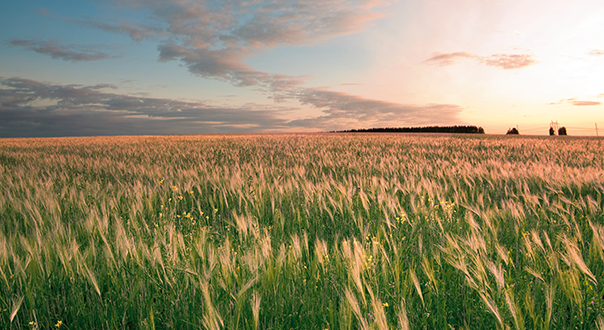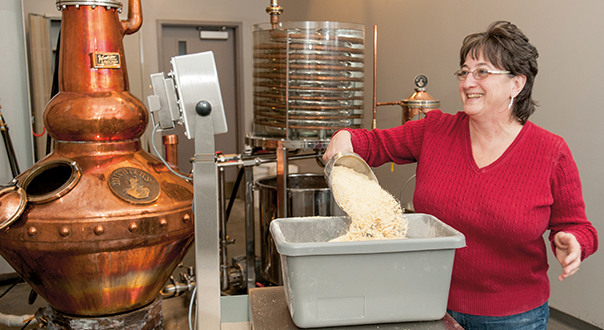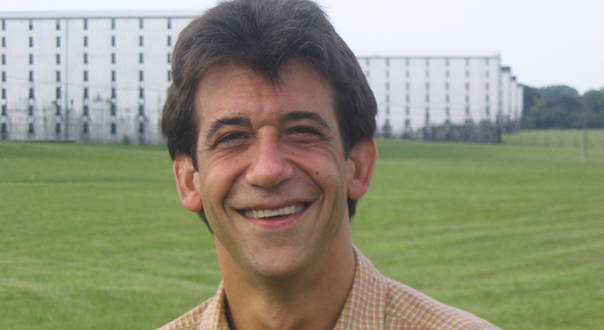It wasn’t that long ago that for most people — bartenders included — when you spoke about American whiskey, you were mostly referring to bourbon. Those were the days when often the only rye to hand was Canadian Club, but as Heaven Hill’s Larry Kass explains, things have changed a lot since then. “We mash rye eight times a year now,” he said, “[but] as little as five years ago we made it only one day in the spring and one day in the autumn.”
That’s what happens when bartenders get interested in a spirit, right?
But what do you look for in a rye whiskey? What does the rye grain bring to a whiskey, and how are they made? To find out, we asked three rye whiskey loving experts.
Distillery: Wild Turkey
The Expert: Eddie Russell
The Job: Distiller
Length of time in role: 33 years
Could you briefly describe the process — e.g. distillery setup — that goes into making your
rye whiskey?
Rye is made just like our bourbon with a different recipe. Straight rye whiskey has to have at least 51% rye grains in the mash bill. For us it is distilled at the same low proofs as our bourbon and aged in new white oak barrels. Rye is aged four to six years for us. Our bourbon is aged six to 12 years.
Can you give us an idea of how much rye goes into the mash bill, and why?
We do not give out our mash bill. All ryes are between 51% and 100% rye grains. We still use corn and barely malt in our rye mash bill. If you use a real high Rye % you would need to malt your Rye or use an enzyme in order to convert the starch to sugar. We use a natural process in all our whiskeys.
Can you tell us a bit about the rye grain that you use? Is there a specific type of rye that makes better whiskey?
We use a #2 plump Rye. It is sourced from Germany right. We need to get a non- GMO that’s high quality and Germany is the place right now to
get it.
What do you think are the hallmarks of a great rye whiskey — should it taste a particular way?
The taste in Rye for us is black pepper, a little smoky and an earthy taste.
Distillery: Michter’s Distillery
The Expert: Pamela Heilmann
The Job: Distiller
Length of time in role: One year at Michter’s and over fourteen years before that at Beam Global
Could you briefly describe the process — e.g. distillery setup — that goes into making your
rye whiskey?
An initial decision is the mashbill (selection and proportion of different grains) that will be used for fermentation. The mashbill is cooked and yeast added to it in the fermentation tank, where it spends a period of time. Setback is also used from the previous distillation for a sour mash process. The beer is distilled on a column still and then goes to a pot where there is a second distillation. Obviously the yeast selected will have an effect on the “white dog” (i.e. distillate) off the stills.
Can you give us an idea of how much rye goes into the mash bill, and why?
We consider mashbills proprietary and do not release them for our Kentucky Straight US*1 Rye or any of our other whiskeys. What I can tell you is that in addition to the 51% or more rye grain required to be used in the production of American Rye Whiskey, we use corn and barley malt. The corn balances out the spice of the rye and the barley malt in our opinion helps achieve a fermentation that will impart extra richness to the spirit. Our style is definitely different from a “high-rye” (e.g. a mashbill of 95-percent rye grain).
What do you think are the hallmarks of a great rye whiskey — should it taste a particular way?
We strive to offer our Michter’s drinkers truly excellent rye whiskey. Across our entire range, every single type of Michter’s Kentucky Straight Rye, from our US*1 to our 10 Year to our 25 Year, is a single barrel product. We believe that the best rye has not only that delicious hallmark spice form the rye grain, but richness and smoothness as well. To that end, we feel that the corn and barley malt is crucial to achieving an ideal balance and complexity of flavor.
What is unique about your production process?
We take pride in our “cost be damned” approach to production. Rather than skimp on expenses, we do everything we possibly can to make the best whiskey we know how. It starts with drying the white oak used in our US*1 Rye barrels to reduce tannins and allow for better flavor. We then toast the barrels prior to charring them, which makes the naturally occurring sugars in the wood more accessible. When we enter the US*1 Rye distillate into the barrels, we do so at 103-proof rather than the higher industry standard barreling proofs in order to achieve a richer, fuller bodied flavor, even though the lower entry proof yields fewer bottles per barrel. When we age US*1 Rye barrels in heat-cycled warehouses, this enhances the interaction between the whiskey and the wood. And finally, we use a unique filtration protocol for the US*1 Rye which is designed to retain as much flavor and aroma as possible.
Distillery: Heaven Hill Distilleries, Inc.
The Expert: Larry Kass
The Job: Director of Trade Relations
Length of time in role: 17 years
Could you briefly describe the process that goes into making your rye whiskey?
All our American Straight Whiskeys—a number of bourbons, from Evan Williams to Elijah Craig to Larceny; Rittenhouse Rye; Bernheim Wheat Whiskey; Mellow Corn Corn Whiskey and others—are produced at Heaven Hill’s historic Bernheim Distillery, utilizing the same mash tubs, fermenters and 70 foot column stills. To meet now unprecedented demand we mash rye eight times a year now, as little as five years ago we made it only one day in the spring and one day in the autumn.
Our mashbill for rye utilizes the same grains used in our standard rye-based (non-wheated) bourbon mashbill, used for Evan Williams and Elijah Craig—corn, malted barley and rye—except in different proportions. According to standards of identity, straight rye whiskey must contain a minimum of 51% rye in the recipe, and we use exactly 51% rye in our mashbill (whereas our bourbon mashbill, which must by law contain a minimum of 51% corn, uses about 78% corn). This is for both taste and process reasons, and is generally true of most traditional American straight ryes. Rye is a very flavourful grain, and more than 51% begins to overpower the more delicate corn and earthy malt flavours.
Can you tell us a bit about the rye grain that you use? Is there a specific type of rye that makes better whiskey
We get our rye from the Dakotas or from Canada, we like it to come from as far north as possible, as this means a shorter growing season and less likelihood of contamination with wild onion bulbs, which is an issue with areas where rye grows.
What do you think are the hallmarks of a great rye whiskey — should it taste a particular way
For many years Heaven Hill was one of three (subsequently four) distilleries that made American Straight Rye whiskey, back when there was very little interest in the category. Due to the almost overnight resurgence of rye, beginning about five years ago and prompted in large part by mixologists and aficionados, most of our limited stock (and of our competitors) was snapped up and we were on tight allocations for a number of years until newly laid down rye came of age. During this time, several “opportunistic” suppliers saw the chance to take either Canadian or American blending rye—not produced according to the standards of straight rye, but designed to be used as a flavouring component of American and Canadian blended whisky—and bottle it and sell it as essentially a substitute for traditional straight rye. Some of this blending rye is made with 100% rye grain, meaning that it must contain artificial enzymes since it contains no barley malt to kick-start the fermentation process. There was recently a widely circulated expose article on the Daily Beast website that discusses the “new ryes”.
What we look for is a traditional straight rye, using rye, corn and malted barley, each constituent element lending its distinctive and important characteristics, that has both a decent amount of age (in a new charred white oak barrel) and is bottled at a high proof to stand up well in the many rye cocktails now so popular. We feel our Rittenhouse Bottled in Bond Straight Rye hits all the right notes for a classic straight rye.






